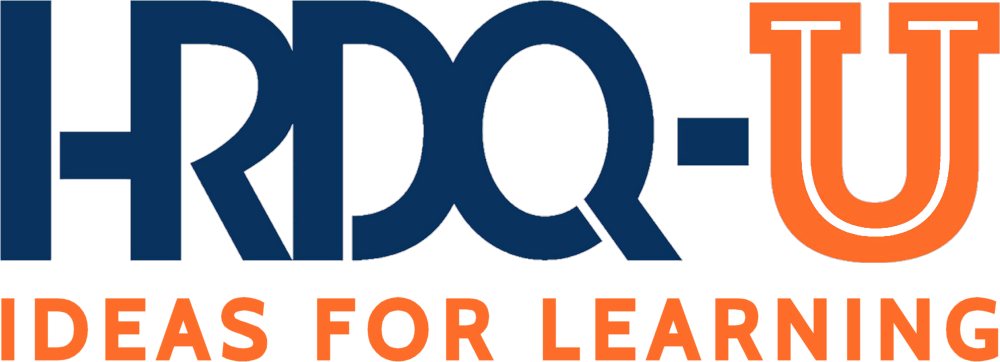The Importance of Clear Authority
You need to have a clear chain of command in your business, as evidenced by how most of the faster group projects without leaders can turn into chaos. Your workplace will become chaotic and very frustrating for your team without one.
Your employees might end up doing the same tasks twice when the authority lines are fuzzy. Big assignments also slip through the cracks because everyone thinks another person is taking care of them. At the end of the day, nobody orders more coffee for the break room, and everyone’s unhappy.
A clear chain of command lets your employees make their decisions a little faster. Your team members won’t waste time thinking about who to ask for approval. Instead, they’ll get quick answers and get their work moving forward.

Your workplace communication runs better with clear authority lines, too. Your employees will know who to report to, which will make information flow up and down through your organization. It operates like a well-organized relay race – each person knows who gets the baton next.
Clear roles help your team stay away from extra stress and confusion in their work. Your employees will feel more confident when they understand their responsibilities and who to ask for help. This being clear means they can do their actual work without getting tangled up in office politics.
Clear authority doesn’t mean you’re creating a rigid workplace where your junior employees can’t speak up. Instead, you’re giving them a clear path so their feedback can reach the right people.
Your workplace trust will start to fall apart without clear authority lines. Your team members will question the decisions and doubt leadership more frequently. Projects will get stuck because people aren’t sure who has the final say. Big facts can get lost in a web of mixed-up communication.
Accountability and Role Clarity
You can start to change your business by creating some clear roles and responsibilities for each of your employees. Your team members can take more pride in their work when they know what they’re responsible for. Clear responsibilities also help your employees know who to contact when problems come up and make problem-solving quicker and smoother.
Vague roles and responsibilities can throw a wrench in the operations. Your entire team’s productivity might grind to a halt just because nobody knows who should manage tasks.
A well-defined chain of command can stop this confusion from happening. See this retail store example – your sales team notices a product that isn’t moving well, and they tell their department manager. The manager then passes this information to the buying team – this easy process means problems get fixed faster instead of floating around without anyone taking charge.

Your goal is to make employees feel responsible without hovering over their shoulders. Strong leaders set clear expectations and then give their team space to work. This kind of trust helps your employees feel liked and can give them room to show initiative.
This reminds me of a company where marketing materials got stuck in limbo because nobody knew who had final approval power. Big projects just sat there for weeks because everyone assumed someone else was handling them. Once the company established a clear chain of command and workflows, these same projects started moving. The marketing team felt more confident because they knew whose approval they needed.
Clear roles also help a lot with team morale. Your employees feel more confident when they understand their responsibilities. When they learn about how their work connects to the bigger picture, it can create job satisfaction and help with employee retention.
Efficiency and Productivity Gains
A direct chain of command can affect how fast you’re able to make decisions and also get your work done. Studies have shown that businesses with well-defined and structured hierarchies are able to make decisions 37% faster than ones that don’t have clear structures.
Most people have experienced approval delays firsthand while at work. A clear chain of command can take away those frustrating days or even weeks of thinking about who needs to sign off on requests. When you know who to report to, everything moves along.
Your team can save nearly 4 hours every single week just with some automation for the most basic tasks. This frees up your time for the harder work that needs more brain power and creative thinking.
An overly strict chain of command might instead backfire on your company. Your employees could feel trapped or stressed without at least some wiggle room. It can become a real problem when there’s a big age gap between managers and their teams, which might tank productivity by as much as 150%.

A reliable reporting structure helps put everyone on the same page about their job duties. Less than half of workers completely know what their company expects of them. Your employees will feel safer in their roles when they can see how decisions move through the company.
They’ll know who to talk to about problems or new ideas. It’ll give you an energized team that’ll help on bigger projects. You’ll feel more confident tackling tasks once you know where you stand in the organization.
Strong hierarchies keep information flowing well throughout your company. Messages travel directly from leadership to front-line staff so everyone stays educated and lined up with company goals.
A well-structured chain of command makes growing your business easier. You can add new teams or even expand into regions more efficiently since everyone knows where they fit into the bigger picture.
Real-World Examples and Strategies
Every business has a chain of command, and you can see different patterns across industries. Your store manager probably needs some approval from their regional director for any kind of serious inventory changes or staff scheduling decisions.
Construction sites take their chain of command – and they should. With the dangerous machines and the safety dangers around, you need to know who to talk to. Site supervisors are there to watch their crews closely to keep everyone safe and also on schedule with their assigned projects.

Small businesses often run their operations in a way that’s way more basic. Your neighborhood coffee shop shows this well. The baristas can talk directly to the owner about everything from supply orders to their work schedules. This quick back-and-forth system helps them solve problems pretty fast.
Your retail cashier needs to know who to tell if the register starts acting up during the madness of holiday shopping. That kind of message has to move up faster through management so the customers aren’t left waiting too long.
Bigger businesses can sometimes get pretty tough, though. You might find yourself answering to your department manager and also the store manager when you’re working at a giant department store. Each industry faces its own command chain challenges.
Construction sites have workers who are spread across multiple locations. That means that project managers and site supervisors need to have reliable systems and good communication channels. Retail stores are always handling staff who are coming and going all of the time. They’re always showing new employees the things about who’s in charge of what.
Tips for a Stronger Command
A clear chain of command will make your business run a bit better. Everyone has to know who they report to and which decisions they’re able to manage by themselves. Just like at a family dinner where everyone has their own job – maybe one person cooks while another sets the table – your team also needs some clear and defined roles.
Your team also needs some easy ways to share information with each other. The communication channels stay around so your employees won’t waste time thinking about who they might need to talk to when problems come up. Some clear paths for sharing information will keep your projects moving forward without any confusion or slowdowns.
A well-structured chain of command lets your managers take care of decisions quite a bit faster. Your lower-level managers shouldn’t need permission from the top for basic items like ordering supplies or planning team meetings.

Your senior leaders can manage the big-picture matters that need their attention. Trust makes everything work quite a bit smoother in your organization. Your managers should feel comfortable letting their teams manage tasks that matter.
Regular meetings and updates will help to build that trust naturally over time. When you show your team members that you believe in them, they’ll often work harder to prove you right. Written responsibilities give you a roadmap for your whole team.
Your documentation should spell out who works with what. It’ll become something you need as your company gets bigger and jobs get tougher. Written guidelines will help you stay away from any confusion or arguments about who should take care of the tasks.
The right organizational structure speeds everything up in your business. Your teams will work faster when they know who can give them answers or approve their work. This prevents two people from trying to manage the same project. It also makes sure the tasks that matter most don’t get forgotten because everyone thought someone else was already handling them.
What Are Alternative Structures?
Not every business needs to have a rigid hierarchy with lots of bosses to be successful. Your company might actually do better without the usual chain of communication that most places seem to have. A flat structure gets rid of the extra management layers between you and the top leaders.
This kind of setup works if you’re running a small business or doing creative work. A flat structure lets your employees talk straight to the top without dealing with multiple layers of middle managers.
Everyone shares the workload and puts their heads together to help solve problems. This type of setup also fires up creativity and lets your business roll with the punches faster. Matrix structures can give you a different way to run your operations. Your people might answer to two bosses at the same time.
Maybe one boss looks after their tasks while another leads the projects. This arrangement lets you make the most of your talent across different types of assignments.

These different ways of running operations aren’t perfect, though. A flat setup can slow some activities down when everyone needs to agree on everything. Your team might get confused about who’s supposed to manage which responsibilities. In matrix structures, people can end up caught between two bosses who want different things.
I worked at a startup with a flat structure once. Any of us could walk right up to the CEO with our ideas or problems. While it was nice to have that kind of access, we sometimes had problems completing tasks. Quick decisions turned into endless group discussions because nobody seemed to be in charge.
Your business structure can depend on what you’re trying to achieve. Small tech businesses and some creative agencies usually like flat structures. Bigger businesses that manage lots of projects might do better with a matrix setup. The real trick is finding that sweet balance between staying flexible and keeping your operations moving forward.
Digital Transformation and Scalability
A clear chain of command really matters when your business has to make serious changes – especially from the new transitions in technology. Problems can quickly spiral into chaos without a structure when you roll out new software to thousands of your employees.
Your team’s communication has likely changed with modern online tools. Most businesses now depend on conversation apps, project trackers, and video calls to stay in touch with each other. These online tools work best when your employees know who they need to reach out to for different needs.
Messages won’t get lost during the big transitions when you have the right structure in place. But too much structure can slow things down. Your employees might feel frustrated if they need approval from a few managers just to make small differences. This happens more than you might realize.

Successful businesses know how to balance keeping order while letting their teams move ahead faster. DHL launched an AI control center that changed their delivery systems. This giant project succeeded because everyone, from the executives to the delivery drivers, knew their role in the bigger picture.
Businesses hit roadblocks every time they try to modernize without planning. They might spend lots of money on new software but skip the step of training their teams. Different teams end up with systems that don’t even work together.
A well-thought-out chain of command helps you stay away from these expensive mistakes. The trick is to find the right balance between having structure and staying flexible. Your chain of command should help guide people and not hold them back.
Clear reporting lines help everyone move together in the same direction during big changes when you set them up. Technology reshapes business practices every single day. Your company needs to keep its processes fresh and updated to stay ahead. Clear reporting lines make sure these updates can flow across your entire organization.
Empower Your Team
Every company needs to have its own strategy. But giving your people some clear expectations and choice-making paths also lets them take action with more confidence!
Your organization’s leadership structure needs to match up with your latest situation. Think about what your team will need, how they usually communicate best, and where you want them to progress. Most structures can adapt and grow naturally with your business while also keeping everyone focused on shared goals.

The right balance will always need some adjustments. That’s completely normal. We at HRDQ-U give tons of resources to level up your leadership game. You’ll get quick access to webinars, podcasts, and blog posts that will show you how to build stronger teams and communicate better.
Our webinar, Accountability and Extraordinary Teaming: Four Factors that Make the Difference, is a very relevant choice that you shouldn’t miss! For practice in management communication, try checking out our Communicating as a Manager Customizable Courseware at HRDQstore. It walks you through actual situations that you’ll see as a leader.



































